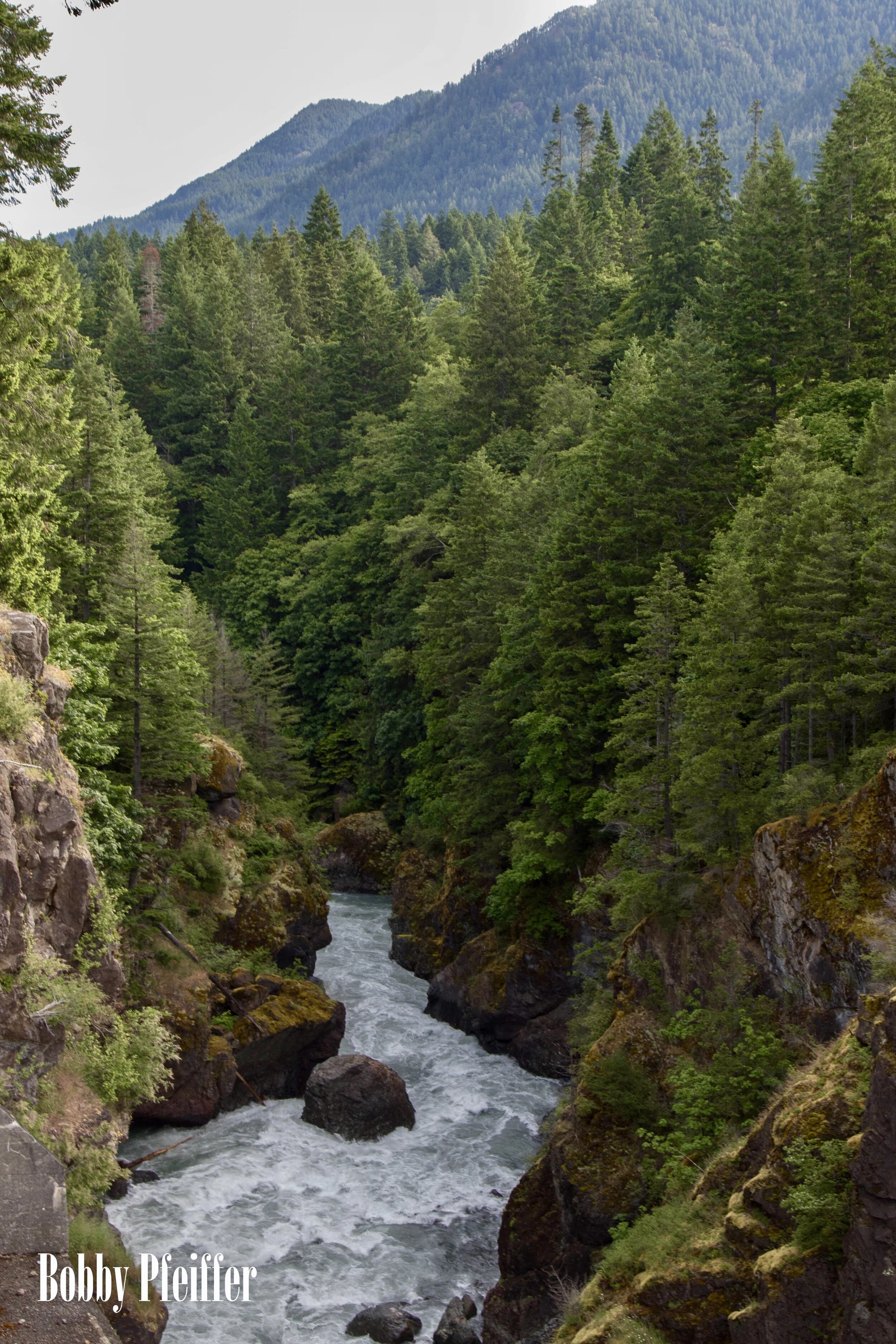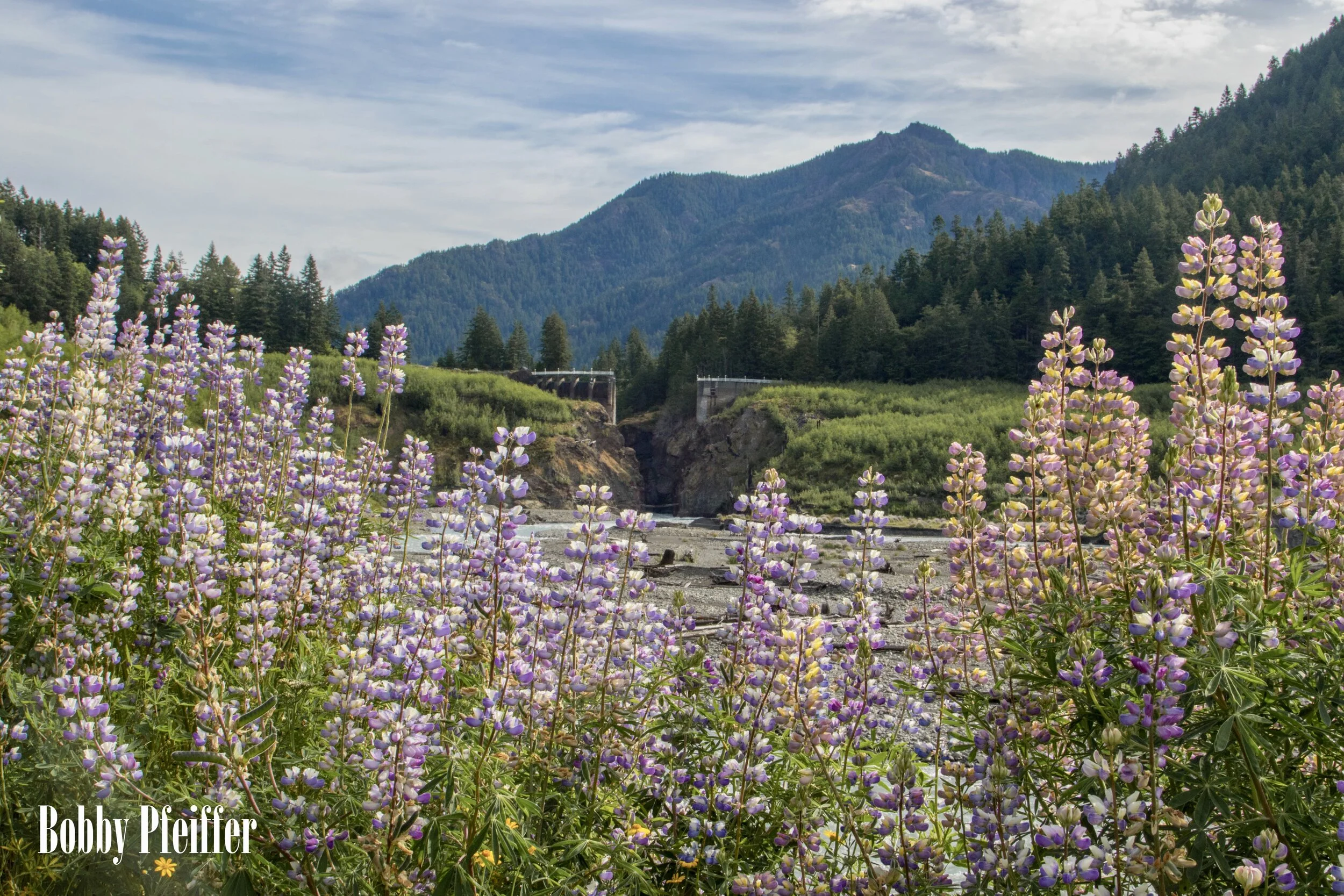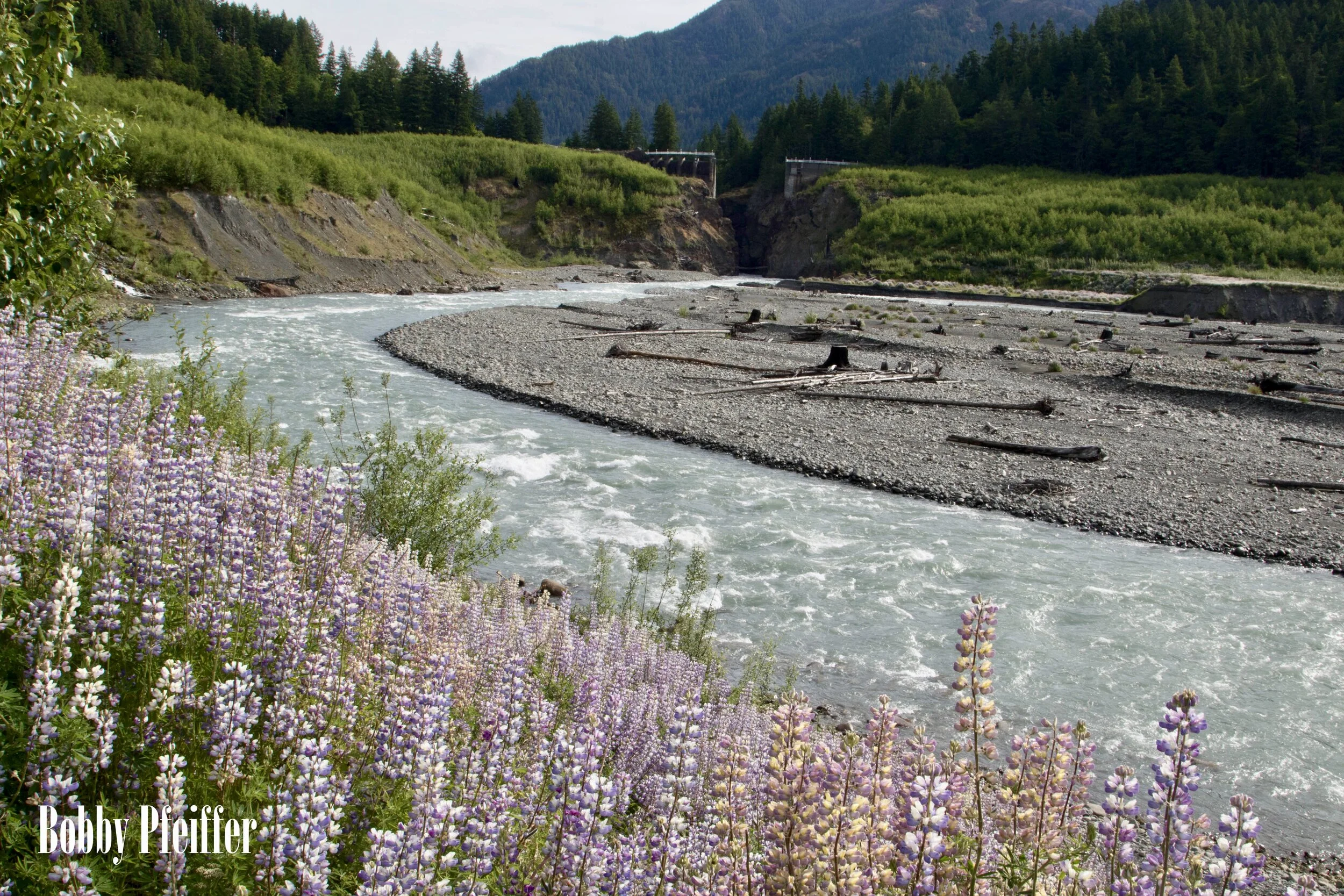Learning from Bigg’s
Bigg’s Killer Whales (Orcinus orca), the marine-mammal-eating ecotype of orca in the North Pacific, are apex predators in the Salish Sea. Unlike their fish-eating relatives that specialize in Chinook salmon, Bigg’s target harbor seals, sea lions, and porpoises. Their hunting events are rarely observed in detail, making direct encounters a valuable opportunity to understand predator-prey dynamics.
One such event unfolded just minutes from the dock. A pod of Bigg’s orca had isolated a harbor porpoise (Phocoena phocoena), initiating a high-speed pursuit. Harbor porpoises are smaller and less powerful swimmers than orca, but they rely on extreme maneuverability to evade predation. For nearly ten minutes, this individual executed rapid, last-second turns to avoid capture. Despite its efforts, the sustained chase ultimately exhausted the porpoise, and the pod succeeded in making a kill.
Killer whales are selective feeders, with prey preferences shaped by ecological specialization. Fish-eating ecotypes, for instance, are known to consume only large salmon, while some populations have been documented removing the livers of sharks and discarding the rest. Bigg’s display a similar selectivity when feeding on marine mammals. Their focus is on blubber, a dense, lipid-rich tissue that provides insulation and serves as the most energy-dense macronutrient available. Blubber offers more than twice the caloric value per gram as protein or carbohydrate, which is critical for whales that may swim up to 80 kilometers in a single day while maintaining stable body temperature in cold marine environments.
The aftermath of the hunt illustrated this dietary specialization. While the orca consumed the blubber-rich tissues, the heart and lungs of the porpoise were left to float at the surface. Lungs, with a volume of roughly 5 liters in porpoises (comparable to ~6 liters in humans), are naturally buoyant. Their presence highlighted the precision of the orca’s feeding behavior, as lean organs provide little nutritional value compared to fat.
Predation events such as this provide rare opportunities to study both the mechanics of orca hunting and the ecological significance of their selective feeding. Observations confirm that Bigg’s orca maximize energetic gain by targeting blubber while minimizing time spent handling prey, a strategy well-suited to their high-energy lifestyles.
Eddied with Sea Lions
Day two of my solo kayak trip around the Johnstone Strait found me working my way through a notoriously finicky stretch of water called Blackney Passage. The current was in my favor, pushing me north, when I spotted them, at least a dozen Steller sea lions hauled out on the rocks.
If you’ve never seen a Steller, picture a grizzly bear that traded its claws for flippers and tripled its weight. The males can push 2,400 pounds; their jaws are more than capable of crushing bone. Fellow kayak guides had warned me: Keep your distance. These animals have been known to turn aggressive, and in the water, they hold every advantage. But the light was perfect, my camera was handy, and the rocks were close. Too scenic to pass up.
My plan was simple: drift past on the current, camera ready, let the wildlife do the posing. I’d used this trick before to get intimate looks without disturbing the subject. Only this time, I underestimated either the current, my angle, or both.
I slipped past the colony easily enough; most of the sea lions didn’t bother to open an eye. But as soon as I rounded the far side of their little island, the water betrayed me. The eddy grabbed my kayak and spun me into a lazy circle. I was suddenly orbiting their rock like a turd circling the toilet drain.
Oh, shit, I thought. The second lap brought me unnervingly close. I could smell their fishy breath, their reeking coats, the unmistakable stench of guano. I tucked my camera into its dry bag as slowly as possible, hoping not to draw attention—but one or two heads lifted. A bark rolled across the rocks.
When I slid my paddle free, more of them stirred, glaring down at me with dark eyes. Then, from the water just a few feet away, a young male surfaced and let out a throaty bark. The effect was instant: some of the big bulls plunged into the water, others bellowed from the rocks, offended by my presence.
That was my cue. I dug my paddle in hard, searching for the thread of main current that could pull me free. The water boiled behind me—half a dozen, then a dozen slick heads cutting toward me. Stellers are astonishingly fast swimmers, and even though I suspected they were chasing out of curiosity, I didn’t stop to confirm.
They gained as I sprinted, my shoulders burning, my pulse pounding in my ears. Every glance over my shoulder showed them closer, their wet muzzles breaking the surface. They could have caught me. Maybe they chose not to. Either way, when I finally broke free into the open current, they peeled off, and I kept paddling until the rock was a speck in the distance.
Alone in the boat, breath coming in ragged bursts, I felt that old cocktail of awe and vulnerability. Out there, you’re never really in control. At best, you’re tolerated. And on that morning in Blackney Passage, the sea lions let me leave.
Stellar Sea Lions hauled out on a submerged rock
Berry Season
If you’re a bear, a meandering hiker, or a wildlife guide it doesn’t matter you eagerly await the arrival of late summer berries. The numbers of berries in Jackson Hole is incredible and it seems like I continually learn about new patches and thus get new places to search for the must berry loving of all animals the bears! For the short list off the top of my head we have; currents, gooseberries, twin-berry (honeysuckle), buffalo berry, bearberry, hawthorn berry, alder-leaved buckthorn, snowberries, choke cherries, salmon berries, whortle berries, grouse whortle berries, service berries, and of course huckleberries. (Naturalist notes goal: try to photograph and or sketch all of these).
More than just the return of the bears after the heat of summer I enjoy berry season because it is an exercise in reading landscapes and climate patterns. Different berries mast in different years depending on weather conditions that year. It’s a sweeter, subtler, California super bloom. Each berry bush, and how interesting that there are no herbaceous berry producing plants, clues to the evolutionary history perhaps, grows in only particular terrain. Some only occur on the north facing slopes of mountains, others only in the wet boggy regions cultivated by beavers.
Knowing where, when, and in what abundance these berries are is a huge clue that helps wildlife enthusiasts like myself to find animals and bears in particular. As I continue to grow as a naturalist this local knowledge has become invaluable to my ability guide.
The Elwha
My morning drive had been an eventful one, I’d lost the sea cliffs, the rainforest, and the heavy mist, trading it in for clear blue skies and a cold ocean wind. I was still looking out at the ocean but instead of an usettling gray and breaking waves this channel was the deepest of blue with a thorough sprinkling of the white specks indicative of wind chop. Sea on one side, I could now see the towering mountains now boarded the other. The road turned off from the coast, and into the the yawning maw of the olypimcs. Gray-blue flames shot from the beasts mouth and into the pacific ocean, the wildest river I’ve ever seen and perhaps the wildest I will ever see. Continuing slowly up the rutted, washed out, stone strewn, paved road? It was easy to see why this was a natural corridor. Compared to the massive blocks of stone on either side of me this gap seemed manageable. It seemed to go all the way, all the way to where I wasn’t sure.
I had heard the story of the Elwha years before. An old dam was taken down, freeing the icy waters within. It was not without controversy, the power from the dam was put to good use in the nearby bustling port towns that speckle the isolated peninsula. The landmark win for conservationist meant not only the restoration of a natural landscape but also the hopeful return of the king salmon that once started and ended their lives here. This would be a field test for dam removal, if the salmon returned and in historic numbers then it would pave the way for the removal of more dams throughout the Pacific Northwest. Adding yet more glamor to the story the salmon that inhabited this wild river were said to have been massive, rumors of hundred pound fish circled around. What a boon that would be to the region, not only anglers seeking to land the fish of a lifetime but to the endangered population of Orca known as the Southern Resident Killer Whales. These Southern Residents, so named because of their southern proximity to Vancouver Island feed on a diet of exclusively salmon, and a hundred pound fish would make the best of meals for a group that is struggling to find their spot in a modern world with less fish, more boats, and more pollution.
As I made my way further into the wilderness the road conditions continued to deteriorate but my spirit grew more and more giddy. The steep canyon walls reflected the roar of the river along with the roar of my engine making odd but beautiful bedfellows. I was nearly at the site of the old dam, I could see the concrete remains on either side of the river paying homage to the wonders of man now defunct and deemed more harmful than wondrous. At this point the rush of the waters was deafening but surprisingly it wasn’t what was most striking. Where there had been crisp mountain air there was now sticky sweet floral notes bombarding my face. I could taste the grape flavor goodness that swirled all around. Cresting the hill and parking in the small gravel lot I could see why, more lupine in denser aggregation than I thought possible. The former lake bed was a monoculture of the healthiest four-foot tall lupines one could imagine.
These flowers were breathing life into the desolate soil, slowly allowing a healthy mix of vegetation to take root. What a poorly misunderstood flower they were. Once believed to suck the nutrients out of the soil they were called the wolf flower because of the supposed destruction they wrought. It’s amazing how deeper understanding of Lupine and Lupus has liberated them of old stereotypes and now cast them as an essential precursor to a healthy ecosystem. Part of me wishes to rewrite the story tying their names together but I don’t wish for the knowledge of human fallibility to go unnoticed.
I reveled at the top of the hill taking everything in. My mind wandered and conjured images of the past and present of this piece of water. The dammed waters bringing order to the creek that flowed downstream and canoes with fishing poles in the reservoir upstream, the gentle whirl of turbines spinning and cracks of electricity conducting over aging wires. Before that indigenous people with woven nets scooping hundred pound salmon as they fought against they icy current, leaping waterfalls as they struggled to complete their singular mission in life. And before that when no human was around to hear the thunder of water on rock and no human to hunt off the brown bears that undoubtedly grew huge to match the massive food sources. I even ponder what it looked like before the olympics rose from the sea 10 million years ago.
While it is true we never step in the same river twice, one can’t help but think about the Elwha as a particularly different river. I fell in love with the Elwha’s vibrant past and with a bit of luck I hope to keep falling in love with its vibrant future.
Teaching Philosophy
For years I have thought outdoor science through a lens of exploration. Upon starting at Teton Science School, (TSS) I had been teaching for 5 years and had a pretty good idea of what was going on. During training we had an interesting question prompt. “In teaching at what point do we name things, how is that information given, and what value does that name have to the students.
I was adamant that names are a late stage process as naming objects tends to take away curiosity and discourages the deep observation that is THE underlying skill of naturalist and all scientists.
My official position was and still is, names should come out in a concept invention phase of the learning cycle and should be based on working through systematic data not spouted. Naming through use of a dichotomous key, flow chart, or guide represent important use of systematic thinking and mastery of our key skills of observation.
A rose by any other name will smell as sweet but it’s critically important to smell the rose!
I received harsh criticism for this and was told name are critically important. “The first thing we do when we meet each other is share our names. Students need them to feel grounded and comfortable.” I was told by a senior faculty member.
I vehemently disagreed but bit my tongue as I have been known to be a rather disagreeable employee and was seeking to change that. The scorpion might not always sting the frog, but he always wants to. I also went about incorporating this style of teaching into my own pedagogy as was what seemed like the norm at TSS.
I honestly thought nothing of it until I was paddling around the Okefenokee swamp (during my layoff) and found myself exploring some deep backwater. These were filled with beautiful green plants, very close gators, challenging paddling puzzles, hat stealing low hanging branches, and a few novel birds. It was the mundane bird though that haunts my thoughts now.
This beautiful “cormorant” was so close but being that I’ve seen all manner of cormorant, from New Jersey to Baja to Vancouver Island I thought nothing of it. I saw it, put a name to it, and moved on.
Had I looked a bit closer. Paid closer attention to the details. Focused more on it than the tangle of fallen logs I was navigating. Maybe then I could have had a close, very interesting encounter with an Anhinga. An interesting species of old-world diving bird. One I’ve never seen before.
I guess the lesson should be for me not to take anything for granted and appreciate all creatures equally. It will be but I think the greatest lesson we can teach are the lessons we learn ourselves and I will stop putting things in boxes when I continue teaching.
Orcas Island
I am currently on Orcas Island, a small island on the Northwest corner of Washington State. This place is truly paradise, whales, clear skies, and a color palate that is unique. The waters surrounding Orcas (pronounced Orcus) as well as the rest of the San Juan Islands is known as the Salish Sea partially as homage to the indigenous Salish people who have made their home on the coast for nearly 14,000 years and in part to better articulate the disconnectedness of a number of bodies of water that can otherwise seem disparate. The Salish Sea encompasses The Northern waters surrounding the Canadian Gulf Islands, the Strait of George, heads South through the San Juan Islands, through the Strait of Juan De Fuca, and finally the Puget Sound.
The Salish Sea is a diverse ecosystem where fish, eagles, seals, whales, and people abound. The popularity of this area for both wildlife and people has put us at the forefront of many human animal conflicts. The prevalence of ecotourism, primarily whale watching and kayak tours acts as both a blessing and a curse for this wildlife. A good tour will allow one to experience a feeling of closeness, respect, and attachment with these animals, tie the animal we so easily bond with back to the less obvious parts of the ecosystem in which they live, and affect ones thought process but here in the Salish Sea and at home. The curse lies in the increased human traffic through the area. It is likely the large numbers of killer whales inhabiting the area are what draws a significant percentage of visitors to this are, its certainly true of me. With people comes myriad detrimental effects including boat traffic, litter, and noise pollution.
If you think the sum of these is positive or negative is a personal decision but as I see it the only way to make decisions that benefit an ecosystem is to have an attachment to that ecosystem.










